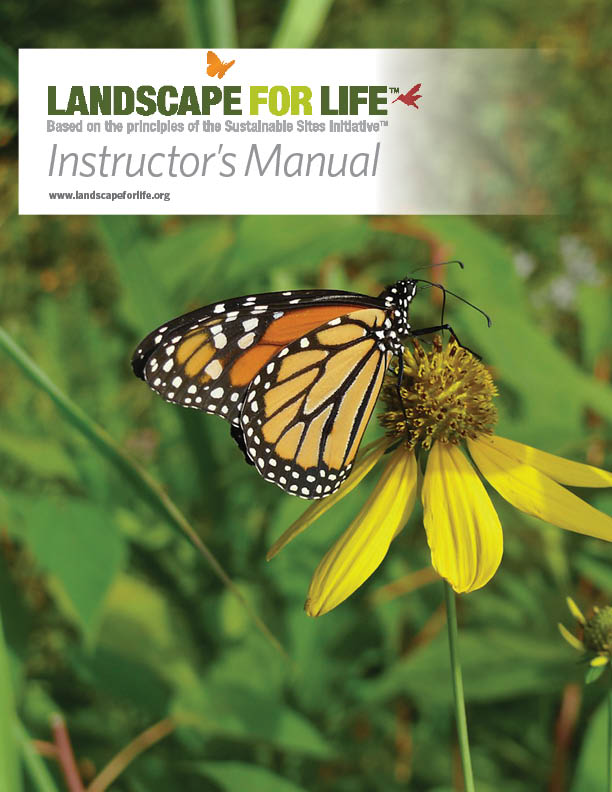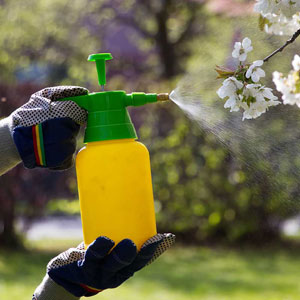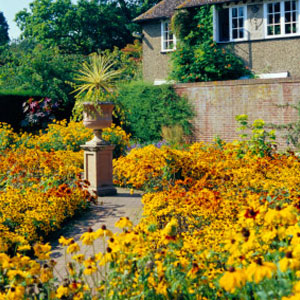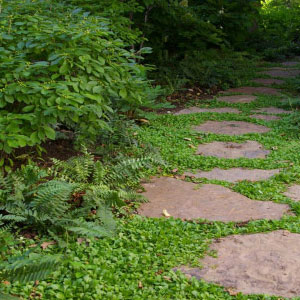WHY IS SUSTAINABLE MAINTENANCE IMPORTANT?
Landscapes require maintenance, because they — like any natural system — are always in flux. Plants grow, soils change, erosion happens, leaves fall and weeds grow. Many common forms of maintenance are incredibly harmful to the environment. Maintenance activities can release unnecessary chemicals into the environment, contaminate water, pollute the air and impact human health.
Sustainable maintenance practices, on the other hand, work with the environment to achieve aesthetic and environmental benefits. Thoughtful, sustainable maintenance is key to the success of a landscape. This means working with nature to support and nurture the living systems that make up our gardens and striving to diminish negative impacts by reducing water consumption, reusing or recycling waste, protecting air and water quality, and minimizing the use of fossil fuels. As stewards of our landscapes, we can make meaningful impacts that enhance the beauty of our garden and its ability to provide ecosystem services.

Creating your own compost or using locally made fertilizer are sustainable alternatives to over-the-counter fertilizers made from chemicals. Image credit: Shutterstock/

Gas-powered lawn mowers contribute to air pollution. A more sustainable option for lawn maintenance would be an electric lawnmower. Better yet: don’t have a lawn at all! Image credit: Shutterstock/kurhan
THE ROLE OF MAINTENANCE IN A SUSTAINABLE LANDSCAPE
The appearance of a landscape is often a key driver for maintenance; however, care of your garden can have many impacts beyond aesthetics.
When thinking about sustainable maintenance, it is important to remember the interdependency between the environment, human health and the economy. The economic benefits associated with landscape maintenance are most easily found when materials or maintenance hours are reduced. All too often, maintenance practices do not reflect the needs of the landscape, but rather a set schedule that is determined by seasons or habit. This results in the unnecessary use of materials and person-hours. Sustainable landscape maintenance considers both the short- and long-term goals of a garden and is informed by careful observations and monitoring of garden conditions.
Unsustainable vs. Sustainable Gardens:
How They Compare
Unsustainable Gardens
- Use over-the-counter fertilizers, herbicides and pesticides that can have negative impacts on the health and well-being of people and the larger natural world on which we depend.
- Pollute water when chemicals used in maintenance contaminate streams and aquifers.
- Depend on the regular use of mechanical lawn and garden equipment that emit considerable amounts of carbon monoxide, volatile organic compounds and nitrogen oxides, increasing air pollution.
Sustainable Gardens
- Reduce the release of chemicals into our environment by using organic fertilizers such as compost and implementing pest management strategies that minimize hazards to people, property and the environment.
- Limit the use of materials that can introduce pollutants into our waterways and also manage stormwater so that it can be cleansed and reused on-site.
- Reduce air and sound pollution by limiting the use of gas-powered lawnmowers, leaf-blowers and similar equipment.
GET STARTED WITH MAINTENANCE

BECOME A LANDSCAPE FOR LIFE TEACHER!
Expanded training opportunities coming in 2024! Landscape For Life includes a complete kit of teaching resources which can be used to conduct classes in sustainable home gardening.
Landscape For Life™ was developed by United States Botanic Garden and the Lady Bird Johnson Wildflower Center, based on the principles of the Sustainable Sites Initiative (SITES®). The program is now a collaboration between Colorado State University Extension and the United States Botanic Garden.








